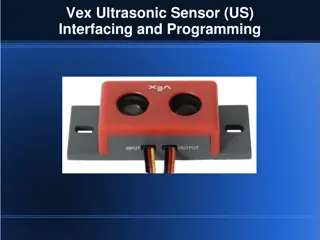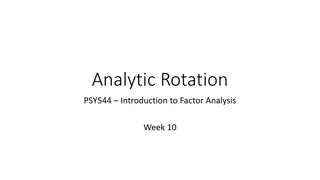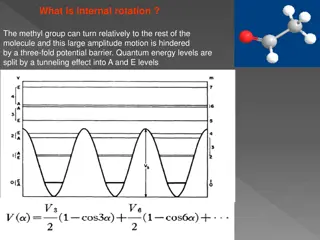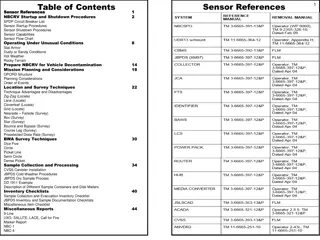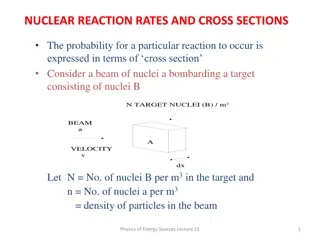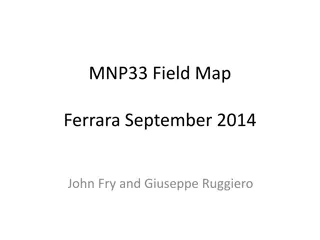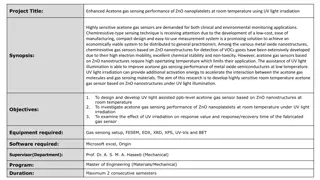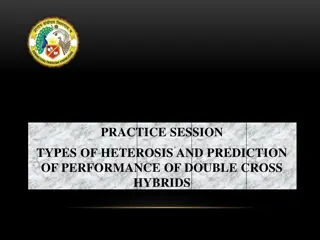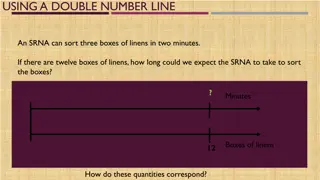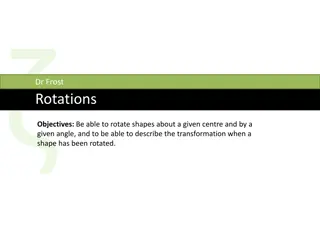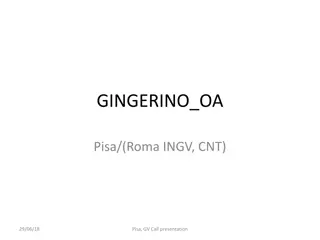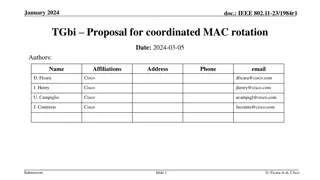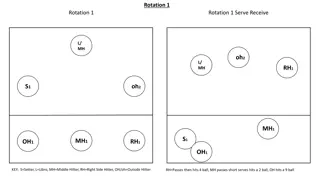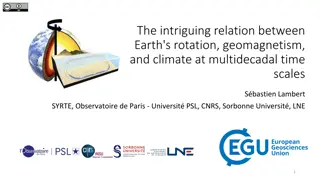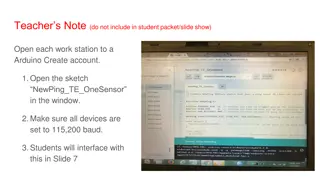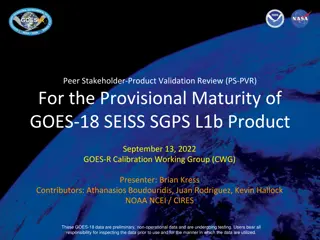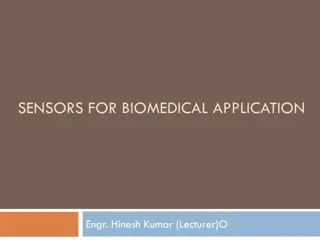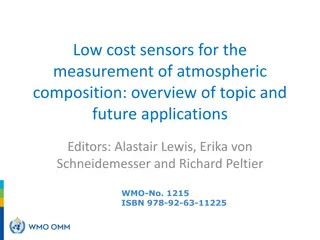Atomtronic Rotation Sensor Design Using Double-Target BECs
Quantum sensors play a crucial role in positioning and navigation systems like GPS to overcome signal disruptions. Atomtronic circuits can serve as rotation sensors by utilizing intricate setups with ultracold atoms. This design proposes an innovative atomtronic rotation sensor consisting of a rectangular array of Bose-Einstein condensates confined in double-target potentials, enabling the detection of circulation or flow within the condensates.
Download Presentation

Please find below an Image/Link to download the presentation.
The content on the website is provided AS IS for your information and personal use only. It may not be sold, licensed, or shared on other websites without obtaining consent from the author. Download presentation by click this link. If you encounter any issues during the download, it is possible that the publisher has removed the file from their server.
E N D
Presentation Transcript
A double A double- -target target- -BEC array atomtronic rotation sensor BEC array atomtronic rotation sensor 1,2Mark Edwards, 1Oluwatobi Adeniji, 1Charles Henry and 2Charles W. Clark 1Georgia Southern University 2NIST and Joint Quantum Institute Atomtronics@Benasque2022 02 May 2022 $$ = NSF and NIST 1
Quantum sensors in positioning, navigation, and timing Global Navigation Satellite Systems such as GPS can be jammed, spoofed, or be unavailable (deep under the ocean or solar flares). Most commercial air and seagoing vessels have onboard inertial navigation systems (INSs) that can determine position and attitude using dead reckoning without the need for receiving external signals. Long-time operation of such INSs suffer from parameter drift which leads to position and attitude errors that grow with time. Secondary sensors with lower sample rates can be used periodically to re- calibrate the primary sensor s parameters. Quantum sensors which measure accelerations and rotation velocities can serve in this capacity. 2
Atomtronic circuits can be rotation sensors Atomtronic SQUIDS (Ryu, et al., Nat Commun 11, 3338 (2020)) Solitons in ring BECs (Helm, et al., PRL 114, 134101 (2015)) Virginia dual-Sagnac atom interferometer (Moan, et al., PRL 124, 120403 (2020)) 3
Atomtronic setup: the ultracold-atom gas is compressed into a thin horizontal sheet The full potential felt by the condensate atoms is a vertical harmonic potential plus an arbitrary 2D potential, Vtrap(x,y), in the horizontal plane. 4
Atomtronic rotation sensor idea: array of double-target BECs We propose an atomtronic rotation sensor design that consists of a rectangular array of Bose-Einstein condensates each confined in a double- target potential. Red = no flow Green = flow 5
Target and double-target trap potentials The target potential is a 2D well potential surrounded by a ring-shaped channel potential. In this trap a ring-shaped condensate is formed that surrounds a disk-shaped condensate. The disk condensate will be used as a phase reference to detect if circulation is present in the ring. The double-target potential consists of two overlapping target potentials. Circulation (or flow) can be induced in one of the rings as shown here by, e.g., phase imprint. 6
Double-target BEC sensor operation 1. Setup: a rectangular array of double-target BECs is created with no flow anywhere. 2. Initialization: flow is induced in the top-ring BEC of each double-target potential. 3. Measurement: barriers are raised, left on, and then lowered in the overlap region of each double-target potential. Each barrier has a different maximum strength. We assume that these steps take place in a reference frame that is rotating at speed, R, with respect to the fixed stars . The purpose of the sensor is to measure R.
Double-target BEC sensor readout 4. Readout: After measurement, the circulation in some double-target BECs has transferred from the top ring to the bottom ring and some have not. By looking at which ones have transferred their circulation and which ones didn t, a lower and an upper bound is placed on the rotating-frame speed, R. The final circulation can be detected by turning off the 2D trap potential and allowing the ring BECs to overlap the disk BECs. If the ring has flow, the interference will be a spiral and, if not, the interference will be concentric rings. trap release
1x1 double-target-BEC necessary characteristics for correct sensor operation Circulation transfer must put a lower bound on R. No transfer must put an upper bound on R. The critical value of R at which transfer occurs, c , must correspond to a unique value of Ub,max. Transfer behavior must be independent of the distance of the array from the rotation axis. Each member of the double-target array must behave independently of all the other array members. Readout must be derived from a single density image. Does the 1x1 double-target BEC satisfy all these characteristics? 9
1x1 double-target BEC simulation characteristics phase imprint release Double-target trap: BEC atomic species: 23Na 166,667 atoms per double-target BEC Ring midtrack radius = 22.5 m Disk radius = Ring width = 5 m Trap depth = 209.2 nK Barrier characteristics 2D Gaussian barrier widths = 11.25 m Ramp-on, hold, ramp-off times = 100 ms Max barrier height, Ub,max , variable Condensate behavior model 2D Rotating-frame Gross-Pitaevskii equation ramp on ramp off hold 10
1x1 and 2x2 double-target BEC rotation-axis behavior Transfer behavior of array members must be independent of the distance of array to the rotation axis. We studied the transfer behavior for array centers at (0,0) mm, (0.5,0.5) mm, (1.0,1.0) mm, and (2.0,2.0) mm. Both 1x1 and 2x2 arrays were studied. We found that the transfer behavior did depend on the distance. The transfer behavior did not change at distances which were large compared to the array size. 11
Transfer behavior of a 1x1 double-target BEC array at zero rotation Far from the rotation axis and when R=0 and for maximum barrier strengths, Ub,max< Ub,max,c , there is no transfer. Thus, by setting Ub,max closer to Ub,max,c , the transfer behavior can be tuned to be sensitive to smaller values of R . Thus, for values of Ub,max < Ub,max,c , there is a critical rotation speed, c(Ub,max) below which transfer does not occur and above which transfer does occur. Ub,max,c = 45.8 nK 14
Each value of Ub,max corresponds to a unique c Each value of Ub,max corresponds to a unique value of the critical rotation speed, c , for circulation transfer. Note that c decreases as Ub,max increases. c4 = 0.240 rad/sec c1 = 0.062 rad/sec c3 = 0.150 rad/sec c2 = 0.072 rad/sec 15
Designing a double-target BEC rotation sensor We can use the 1x1 double-target BEC array results to design a 2x2 array to be sensitive to rotation speeds in the range c1 < R < c4 . We do this by raising barriers of different heights across the overlap regions of different members of the array. c1 < R < c2 Ub,max,2 , c2 Ub,max,1 , c1 c2 < R < c3 Ub,max,3 , c3 Ub,max,4 , c4 c3 < R < c4 16
Turn off 2D potential for readout After turning off the trap potential both the rings and the disks expand and they eventually overlap. This produces concentric rings if flow is not present and spirals if flow is present. 17
2x2 rotation sensor simulation R = 0.2 rad/sec Final Release Density Yellow=circles, red=spirals 18
Summary and Future Work Summary and Future Work We propose an atomtronic rotation sensor based on an array of double-target BECs that are subjected to potential barriers of varying strengths. Sensor operation consists of setup, initialization, measurement and readout steps. The sensor can be designed to be sensitive to different ranges of rotating-frame speeds by studying the behavior of a single BEC pair. Readout can be performed with a single density measurement. Further work will include: Investigating the possible sensitivity ranges and how they depend on target geometry. Sensor operation when the sense of the frame rotation is unknown. Exploring the maximum practical size of the double-target BEC array. 19
Edwards Research Group and Collaborators Edwards Research Group and Collaborators Edwards Research Group Oluwatobi Adeniji Charles Henry Colson Sapp Andie Smith JQI/NIST Theory Collaborators Charles Clark Yi-Hsieh Wang Ted Jacobson University of Newcastle, UK Tom Bland Nick Proukakis JQI/NIST Experimental Collaborators Gretchen Campbell Bill Phillips Wendell Hill III Steve Eckel Fred Jendrzejewski Chris Lobb Taras Shevchenko National University of Kyiv, Ukraine Alexander Yakimenko O. Chelpanova I. Yatsuta A. Oliinyk 20



